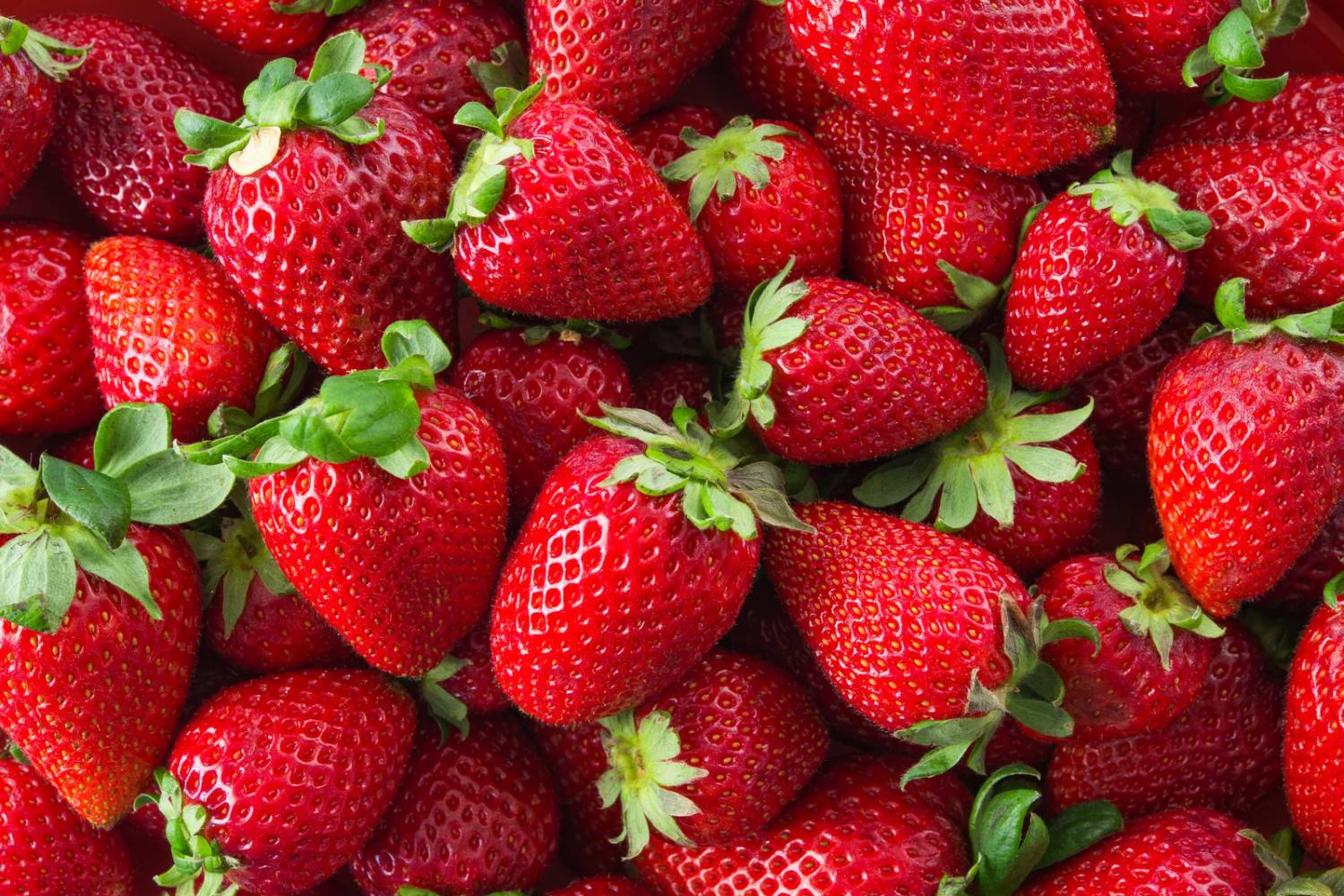
Do you love strawberries? And, do you want to be able to grow them yourself all year long, no matter what the weather is like outside? If so, then this is the blog post for plant lovers like you! In this ultimate guide, we will walk you through everything you need to know in order to start growing strawberries indoors.
By following our tips and advice, you can have a bumper crop of these delicious berries all winter long! So what are you waiting for? Read on to get started!
Why grow strawberries indoors?
There are many reasons to grow multiple plants of strawberries indoors, but one of the most important is that it allows you to control the environment in which your plants grow. This means you can ensure uniform strawberry production year-round.
It prevents pests and diseases from destroying your crop. Pest and diseases can also be prevented by growing strawberry plants in hanging baskets indoors. Additionally, growing strawberries indoors allows you to take advantage of natural light, which is often brighter than artificial light.
A guide to growing strawberry plants indoors
These sections, step by step will guide you on how to grow strawberries indoors.
Section 1: The types of strawberries that can be grown indoors
Strawberries are a type of fruit that can be grown indoors. There are many different types of strawberries that can be grown indoors, and each has its own benefits.
Some of the strawberry varieties that can be grown indoors include raspberries, blueberries, blackberries, and boysenberries. Each type of strawberry has its own unique flavor and texture, so it's important to choose the right one for your taste.
Section 2: How to prepare the soil for your indoor strawberry garden
If you're thinking of growing strawberry seeds indoors, you'll need to prepare the soil first. Here's how to do it:
1) Add organic matter like compost or aged manure to the soil.
2) Add in some grit to help improve drainage and encourage better root growth.
3) Make sure the soil is evenly moist, but not soggy.
4) Plant your strawberries in early spring, when the ground has warmed up a bit.
Section 3: Planting and caring for your strawberries indoors
If you want to grow your own strawberries, there are a few things you need to take care of first.
Location & Light
Sunny windowsills or balconies are the perfect places to grow strawberries. Just make sure you provide them with plenty of sunlight, and they will reward you with sweet, delicious fruit.
Strawberry plants need bright light and plenty of sun to grow and produce fruit. You can grow strawberry plants anywhere in your home that receives a minimum of 5-6 hours of direct sunlight per day. Avoid keeping your strawberry plants near hot and cool air vents of air conditioners and heaters, as this could scorch the plant.
Using limited artificial lights for strawberry plants will give your plants some rest in the night and help them grow more fruit. Alternatively, you can manually turn off your grow lights at night to give your strawberries the best chance of a successful harvest.
Soil
Slightly acidic soil with a pH around 5.3 to 6.5 is most suitable for planting strawberries, but neutral soil is also acceptable. Slightly alkaline soil will not support strawberry growth as well. Additionally, strawberries grow best in soils that are moist but not wet.
One of the best things you can do for your strawberry plants is to make sure the soil they are growing in is free from any contamination. Contaminated soil will not only limit the yield of your plants but also increase the chances of pesticide and fertilizer resistance in your strawberries.
Make sure to keep the soil slightly moist all the time, but not overly drenched. If there is not much sunlight and the air around the plants is cold and damp, water only when 1 inch of topsoil is dry.
Fertilizer
A well-balanced liquid fertilizer can be fed once every 2-3 weeks to help your plants receive all the micronutrients they need. These fertilizers are composed of all the major elements your plants need, and they're safe for use around pets and children.
Balanced fertilizer includes both Calcium and Magnesium to help the soil hold onto water and nutrients. Choosing a fertilizer with these two essential minerals will help ensure your plants get the nutrients they need, even if your soil is acidic.
If you’re looking to extend the life of your strawberries, you can feed them with tomato or rose fertilizer, once the flowering starts. Doing so will help to increase fruit yields and improve flavor.
Pruning
Indoor strawberry growing can be a fun and rewarding experience, but it requires some care and attention to detail. Start the pruning process from the top of the plant.
This is where the main branches grow, so start by cutting them off at the ground level. Remove any dead or damaged branches from the main stem. This will help keep your strawberry bush healthy and productive.
Pollination
If you want to pollinate strawberry flowers, you will need to use a soft brush. Paint or makeup brushes would be fine. Pollination happens when the male organ of the strawberry plant, called an anther, touches the female organ of the strawberry plant, called a pistil. Pollen grains are transferred to the female pistil during this process.
Harvesting
Strawberries are a summer favorite and are available for harvest around 4-6 weeks after the blossoms. The berries are generally red and aromatic and can be eaten fresh or used in jams, jellies, and other recipes. For juicy strawberries, pick strawberries when they are slightly softer than you would like them to be - they will firm up as they ripen.
When provided optimal environment i.e. light, soil, temperature, etc., bare-root plants of alpine strawberry can be harvested which is preferred by commercial users as it is less costly.
Section 4: Tips for harvesting and storing your homegrown strawberries
Tips for Harvesting
Harvesting strawberries is a fun and easy task that anyone can do. Here are some tips for harvesting your homegrown strawberries:
1) Pick the berries when they are firm but slightly softened.
2) Use a sharp knife to cut the strawberries off the stem.
3) Place the strawberries in a container filled with cold water.
4) Rinse the strawberries briefly under cool water and drain.
5) Allow the strawberries to dry on a paper towel before storing them in an airtight container.
Growing strawberries indoors from seeds to harvesting them, you've seen it all. The main question is, how much time does it take to grow strawberries?
How Long Does it Take to Grow Strawberries Indoors?

Strawberry plants typically yield ripe strawberries 5-6 months after the seeds germinate. For quicker results, purchase strawberry seedling plants.
Using strawberry seedling plants for quick results
When you purchase a seedling plant, it may already have blossoms or immature strawberries growing on it. While the blossoms usually take 4-6 weeks to yield ripe strawberries, some seedlings may produce fruit earlier.
There are many benefits to growing strawberries indoors from purchased seedlings. The plants are usually larger, healthier, and faster-growing than those grown from seed. There is no need for a greenhouse or cold frame, and harvesting can be as early as 8-10 weeks after planting. Additionally, strawberry plants are very versatile and can be trained to grow in a variety of shapes and sizes.
Pot size for indoor strawberries
Strawberries are low-maintenance plants that can be grown in a single pot or in a crowded space. Multiple strawberries can be grown in the same pot (including Alpine strawberries) by simply planting them close to one another. Because strawberries have a shallow root system, they are best suited for growing in containers with small spaces between them.
A 6 to 8 inches deep and wide flowerpot, , preferably a window box would be fine. Maintain 3-4 inches of spacing between each plant. Incorporate some type of drainage system such as perforated tubing to help prevent waterlogging.
Fill the pot with good quality potting soil and add some fertilizers if needed. Water the plants regularly and keep the soil well-watered throughout the growing season.
Growing Hydroponic Strawberries
Hydroponic strawberries are a great option for those who want to grow their own fruit without the hassle of growing a vegetable garden. With hydroponic strawberries, you can expect to get larger and tastier berries than you would with traditional strawberry farming. There are a few important things to keep in mind when growing hydroponic strawberries indoors, including choosing the right gardening method and using the right nutrients for your plants.
If you're looking to plant your own hydroponic strawberries, there are a few things you'll need. You'll need a container that can hold enough water and nutrients for your strawberries to grow. Also, you'll need some type of growing medium, like coco coir or potting soil with peat moss, to put in the container. Moreover, you'll need a source of light for your plants.
